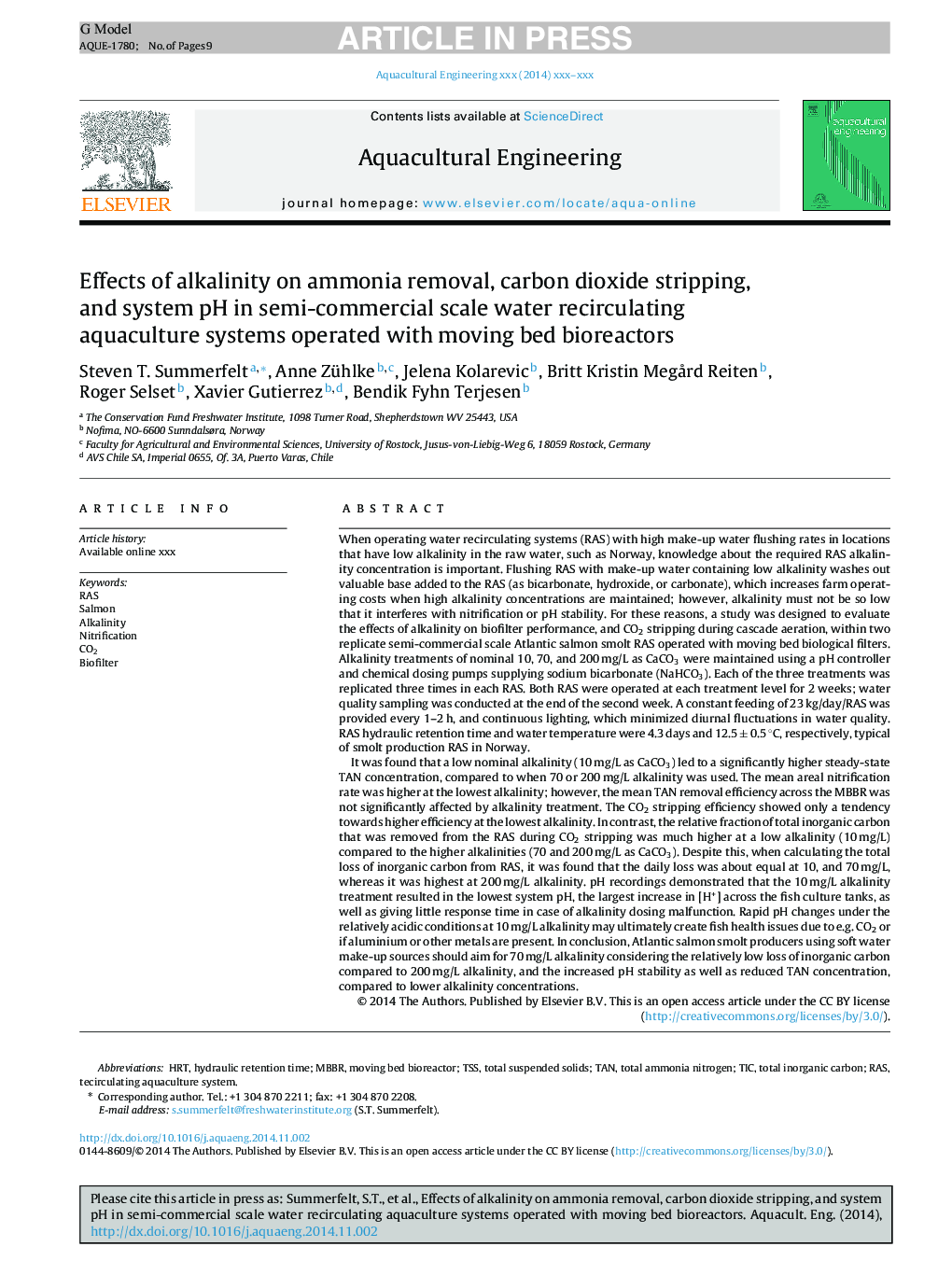| کد مقاله | کد نشریه | سال انتشار | مقاله انگلیسی | نسخه تمام متن |
|---|---|---|---|---|
| 6381329 | 1625705 | 2015 | 9 صفحه PDF | دانلود رایگان |
عنوان انگلیسی مقاله ISI
Effects of alkalinity on ammonia removal, carbon dioxide stripping, and system pH in semi-commercial scale water recirculating aquaculture systems operated with moving bed bioreactors
دانلود مقاله + سفارش ترجمه
دانلود مقاله ISI انگلیسی
رایگان برای ایرانیان
کلمات کلیدی
TSSHRTRASTANMBBRTICMoving bed bioreactor - بیوراکتور تخت حرکتیBiofilter - بیوفیلترhydraulic retention time - زمان هیدرولیکیAlkalinity - قلیاییSalmon - ماهی سالمونtotal suspended solids - مجموع مواد جامد معلقNitrification - نیتریفیکاسیونCO2 - کربن دیاکسیدtotal ammonia nitrogen - کل نیتروژن آمونیاکTotal Inorganic Carbon - کل کربن معدنی
موضوعات مرتبط
علوم زیستی و بیوفناوری
علوم کشاورزی و بیولوژیک
علوم آبزیان
پیش نمایش صفحه اول مقاله

چکیده انگلیسی
It was found that a low nominal alkalinity (10Â mg/L as CaCO3) led to a significantly higher steady-state TAN concentration, compared to when 70 or 200Â mg/L alkalinity was used. The mean areal nitrification rate was higher at the lowest alkalinity; however, the mean TAN removal efficiency across the MBBR was not significantly affected by alkalinity treatment. The CO2 stripping efficiency showed only a tendency towards higher efficiency at the lowest alkalinity. In contrast, the relative fraction of total inorganic carbon that was removed from the RAS during CO2 stripping was much higher at a low alkalinity (10Â mg/L) compared to the higher alkalinities (70 and 200Â mg/L as CaCO3). Despite this, when calculating the total loss of inorganic carbon from RAS, it was found that the daily loss was about equal at 10, and 70Â mg/L, whereas it was highest at 200Â mg/L alkalinity. pH recordings demonstrated that the 10Â mg/L alkalinity treatment resulted in the lowest system pH, the largest increase in [H+] across the fish culture tanks, as well as giving little response time in case of alkalinity dosing malfunction. Rapid pH changes under the relatively acidic conditions at 10Â mg/L alkalinity may ultimately create fish health issues due to e.g. CO2 or if aluminium or other metals are present. In conclusion, Atlantic salmon smolt producers using soft water make-up sources should aim for 70Â mg/L alkalinity considering the relatively low loss of inorganic carbon compared to 200Â mg/L alkalinity, and the increased pH stability as well as reduced TAN concentration, compared to lower alkalinity concentrations.
ناشر
Database: Elsevier - ScienceDirect (ساینس دایرکت)
Journal: Aquacultural Engineering - Volume 65, March 2015, Pages 46-54
Journal: Aquacultural Engineering - Volume 65, March 2015, Pages 46-54
نویسندگان
Steven T. Summerfelt, Anne Zühlke, Jelena Kolarevic, Britt Kristin MegÃ¥rd Reiten, Roger Selset, Xavier Gutierrez, Bendik Fyhn Terjesen,